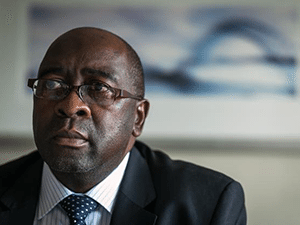
[miningmx.com] – INTENSIVE electricity users are facing temporary increases in the electricity levy until a carbon tax is implemented, South African finance minister Nhlanhla Nene announced in his budget speech today.
“Government is examining loopholes that unduly favour intensive electricity users and will consider a levy that would apply to users and exporters of electricity who consume in excess of R800,000MW/h per year,’ Nene said.
This is over and above the higher tariff increase allowed to Eskom by the National Energy Regulator of South Africa from 2016. The increase in the levy was intended to help manage demand for power.
Nersa approved a 12.69% increase in the tariff to help Eskom recover R7.8bn in unbudgeted costs. The increase is 4.7 percentage points above the 8% tariff increase originally agreed to for the year to March 2016.
The National Treasury proposes a temporary increase in the current electricity tariff from 3.5c/kWH to 5.5c/kWh, but the additional 2c/kkWh will be withdrawn once a carbon tax policy is implemented.
The electricity levy is to promote energy efficiency and encourage lower greenhouse gas emissions in the absence of a carbon tax, which will be introduced in 2016, Nene said. “A draft carbon tax bill will be introduced later this year for a further round of public consultation.’
The finance minister acknowledged that the current low and unreliable levels of electricity supply are the biggest constraint to economic growth in South Africa and there is a risk that it could dampen the 2% projected GDP growth even further.
A further deterioration in electricity availability could reduce economic growth to 1%, which will have the biggest impact on the mining and manufacturing sectors due to their high electricity intensity.
In reverse, better-than-expected availability of electricity, or greater efficiency in energy supply and usage could push GDP growth to 2.4%.
“Higher growth is possible, if we make good progress in responding to the electricity challenge,’ Nene said. But frequent unplanned outages and low electricity availability are likely to continue for the next three years.
ELECTRICITY SUPPLY
To mitigate the shortage in electricity supply government plans to among other things, increase gas generation.
More than 3,000MW of power from natural gas and initial power is expected to be available from 2020, while steps are also underway to switch Eskom’s open-cycle gas turbines from diesel to natural gas.
According to the 2015 Budget Review, the South African government plans to spend an estimated R17bn on the construction of such gas turbines.
In addition, there are plans to obtain up to 2,500MW from independent power producers generating electricity from coal. It’s expected that this power should come onto the grid by 2020.
The construction of a third coal-fired power plant, called Coal 3, is also currently in the feasibility phase, estimated to cost around R111bn, according to the 2015 budget review.
TAX INCREASES
Tax revenues for the current fiscal year is limited to a small hike in personal income tax and higher fuel levies, but a report by the Davis Tax Committee, established in 2013, will be published soon in which the overall tax system, including wealth and mining taxes, may be reconsidered.
The Davis Committee’s recommendations “will inform policy considerations in the 2016 budget,’ Nene said.
In the current fiscal year a total increase in the fuel levy of 80.5c will be implemented.
To reduce the dependence on diesel, government also propose to reduce the diesel fuel levy refunds to 20% and 50% of the general fuel levy respectively for land mining activities and generation of electricity by Eskom’s open-cycle gas turbines.
“The current exemption provides a perverse incentive to use diesel excessively,’ Nene said.









